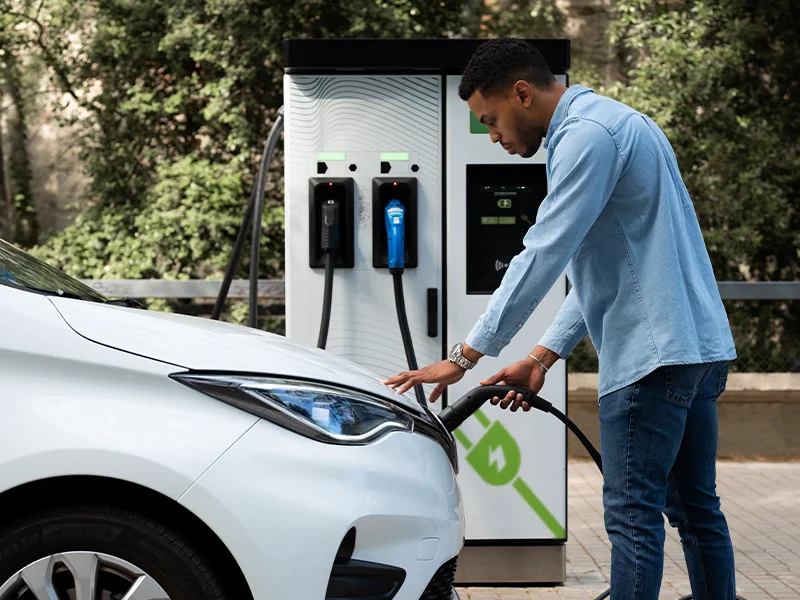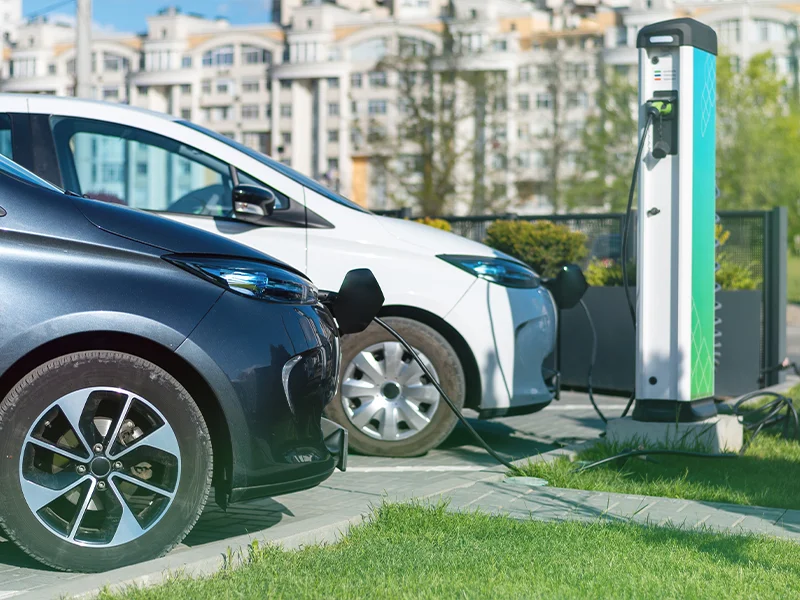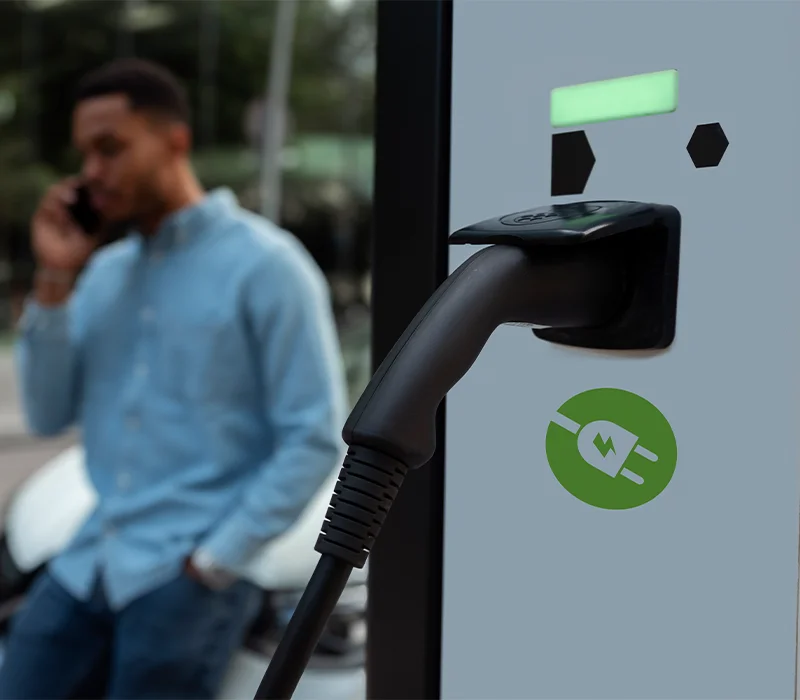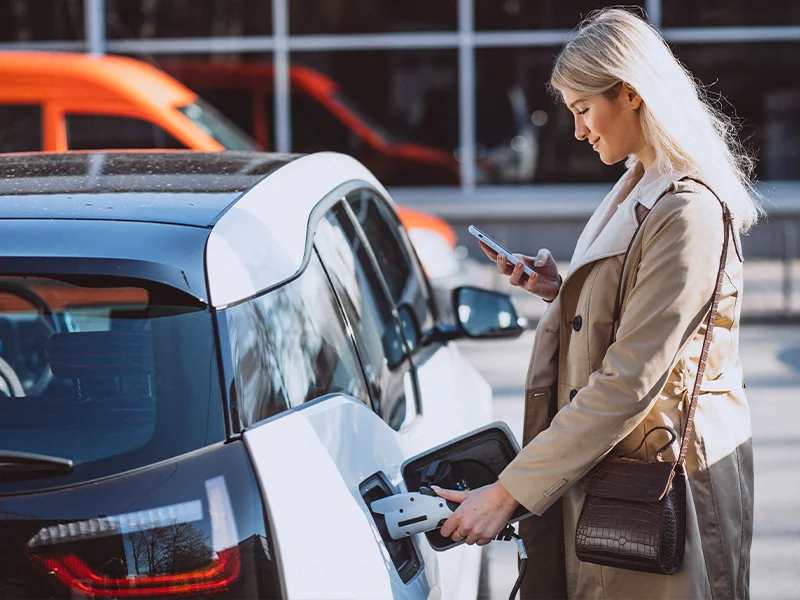The landscape of EV charging is rapidly evolving as new technologies are developed and more drivers make the switch from traditional vehicles. It’s important that CPOs stay ahead of trends so they can continue to serve customers the best they can and meet new needs in the marketplace. Some of these trends are as straightforward and new governmental regulations, while others rely on advancements in infrastructure and sustainability. This blog will give you a quick overview of some of the trends you should be keeping an eye on.
The Rise of Electric Vehicles
The adoption of EVs has been steadily increasing on a global scale, driven by factors such as environmental concerns, government incentives, technological advancements, and growing consumer awareness. Not only have actual sales of EVs been growing year over year, there are other statistics that signal the upcoming widespread adoption of EVs:
- Government Incentives: Many countries have introduced incentives to encourage EV adoption. These incentives include tax credits, rebates, reduced registration fees, and access to carpool lanes. For example, the U.S. federal government provides a tax credit of up to $7,500 for qualifying EVs.
- Automaker Commitment: Major automakers are increasingly investing in EV development and production. Companies like Tesla, Volkswagen, Ford, and General Motors have announced ambitious plans to electrify their vehicle lineups, with commitments to producing hundreds of thousands of EVs annually.
- Environmental Concerns: Heightened environmental awareness and a desire to reduce carbon emissions are driving consumers toward EVs. As countries aim to meet climate goals, the transition to electric mobility is seen as a crucial step.
- Cost Parity: As battery prices continue to decline, the cost of manufacturing EVs is becoming more competitive with traditional internal combustion engine vehicles. This cost parity is expected to further drive adoption.
- Increasing EV Model Variety: Automakers are offering a wider range of EV models, including electric SUVs, sedans, and even electric trucks, catering to various consumer preferences and needs.
- EV Sales Forecasts: Projections indicate significant growth in the coming years. For instance, Bloomberg New Energy Finance forecasts that EVs could account for 58% of global passenger car sales by 2040.
These statistics and trends clearly demonstrate the accelerating adoption of electric vehicles worldwide. As technology continues to advance, charging infrastructure expands, and regulatory support strengthens, the shift toward electric mobility is poised to become even more pronounced in the years ahead. Becoming a CPO allows you to capitalize on that growth.
Charging Infrastructure Expansion
The need for an extensive and diverse charging infrastructure is vital to overcome key barriers to EV adoption. It directly addresses range anxiety by providing EV drivers with confidence that they can find a charging station when needed, which is essential for promoting long-distance travel and daily use of EVs.
A well-distributed network of charging stations, including various charging speeds and accessibility options, enhances convenience, making EVs a more practical choice for consumers. Additionally, a diverse charging infrastructure caters to the evolving EV market, accommodating different vehicle types and ensuring inclusivity for all users, including those with disabilities.
CPOs play a pivotal role in seizing the growth opportunities presented by the expanding EV market. By strategically expanding their charging networks, CPOs can capture a larger share of the market and cater to specific segments, such as commercial fleets or urban commuters. With certain technology, CPOs can enhance the user experience with real-time monitoring, remote management, and user-friendly mobile apps like Charge Anywhere.
The demand for EVs necessitates an extensive charging infrastructure, and CPOs can thrive by meeting these needs and accelerating the transition to cleaner and more sustainable transportation.
EV Charging Technological Advancements
Several upcoming technologies are poised to have a significant impact on the future of EV charging, enhancing convenience, speed, and accessibility. Faster charging technologies are at the forefront, with advancements in high-power chargers allowing for significantly reduced charging times.
For instance, 350 kW and 800 kW chargers are being developed, which can add hundreds of miles of range in just minutes. This will make long-distance travel more practical and reduce charging stops, ultimately bolstering EV adoption.
Wireless charging is another groundbreaking technology on the horizon. This technology allows EVs to charge without physical connections, simply by parking over a charging pad or plate. This presents opportunities for seamless and automated charging experiences, particularly in urban settings and for electric fleets.
Bidirectional charging, which allows EVs to discharge electricity back to the grid, is also gaining traction. This can enable vehicle-to-grid (V2G) applications, helping stabilize the electrical grid and providing an additional revenue stream for EV owners and operators.
CPOs can leverage these new technologies in several ways. Firstly, by investing in high-power chargers, CPOs can offer faster charging services, attracting more customers, especially those on long road trips who value quick refueling stops. Secondly, embracing wireless charging and V2G technologies can enhance convenience and grid flexibility.
CPOs can integrate these solutions into their charging networks, making it easier for EV drivers to charge without physical cables and potentially earn money by selling excess energy back to the grid. By adopting these technologies early, CPOs can set themselves apart in the competitive EV charging market.
EV Charging Policy and Regulations
Upcoming or potential policy changes can significantly impact the EV charging industry, both positively and negatively. Some key policy considerations include:
- Regulatory Support: Many governments worldwide are offering incentives and subsidies to promote EV adoption. CPOs should closely monitor policy developments and take advantage of incentives, grants, and tax credits to expand their charging infrastructure.
- Charging Standards: Changes in regulations regarding charging standards and interoperability may impact the types of chargers and connectors needed.
- Environmental Regulations: Stricter environmental regulations may push for the use of renewable energy sources in charging stations. CPOs can prepare by exploring green energy options and sustainable charging solutions.
- Tariffs and Taxes: Tariffs on imported components or taxes on electricity can affect charging station costs. CPOs should analyze the potential financial impact and adjust pricing strategies accordingly.
- Permitting and Zoning: Changes in local permitting and zoning regulations can affect the installation and operation of charging stations.
To prepare for these policy changes, CPOs should proactively engage with industry associations, monitor government announcements, and conduct regular assessments of their charging infrastructure to ensure compliance with evolving regulations. Additionally, they should maintain flexibility in their business models to adapt to changing market conditions and seize opportunities presented by supportive policies.
EV Charging Sustainability Trends
The growing focus on sustainability and renewable energy in EV charging reflects the broader environmental goals of reducing carbon emissions and promoting cleaner transportation, which is part of the reason EVs are becoming so popular in the first place. CPOs can contribute to sustainability in several ways:
- Renewable Energy Sourcing: CPOs can source electricity from renewable energy sources such as wind, solar, or hydroelectric power. This reduces the carbon footprint of the charging stations and aligns with the environmental aspirations of EV owners.
- Energy Storage Solutions: Incorporating energy storage systems, like batteries, into charging infrastructure can optimize energy use, reduce grid stress during peak times, and enable charging stations to operate off-grid using stored renewable energy.
- Grid Integration: Smart grid technologies allow CPOs to coordinate charging schedules with grid demand, leveraging renewable energy when it’s abundant and reducing the load during peak periods, thereby promoting grid stability and sustainability.
- Sustainable Infrastructure: CPOs can implement sustainable design principles for charging stations, including energy-efficient lighting, recycled construction materials, and eco-friendly landscaping.
- Education and Outreach: Promoting sustainability among EV users is essential. CPOs can provide information about the environmental benefits of EVs and renewable energy to raise awareness and encourage sustainable practices.
By incorporating these sustainability measures into their operations, CPOs not only reduce their environmental impact but also appeal to environmentally conscious EV drivers, potentially attracting a larger customer base and contributing to the broader goals of a greener transportation ecosystem.
Intelligent Route Mapping with Charge Anywhere
Intelligent Route Mapping is a method of automatically planning journeys more efficiently. This technology considers the location of charging stations along a driver’s route to help select the right station for them. By utilizing real-time data and advanced algorithms, intelligent route mapping systems provide users with detailed information about the availability, charging speed, and accessibility of charging stations. This allows EV drivers to make informed decisions about when and where to charge, effectively eliminating range anxiety and streamlining their travel experience.
CPOs may think of intelligent route mapping as mostly a tool for drivers, but it can also help you optimize your services. By partnering with an app like Charge Anywhere that utilizes intelligent route mapping, you can ensure that your charging station is shown to a wider range of ideal customers. Charge Anywhere has a diverse customer base with different vehicles and needs in different areas. Before partnering with Charge Anywhere, they may never have come across your station, but will now be able to see the amenities, services, and technologies you offer and easily route themselves there when you’re available and nearby.
More customizable software like Charge Anywhere benefits both EV drivers and CPOs.
EV Charging Station User Experience and Customization
In general, personalization is in high demand. Customers usually have a better user experience if it’s more tailored to their needs. Apps, platforms, and services that check off all their boxes will make charging feel like a seamless and simple experience. Even something as simple as your charging station being exactly designed to their type of car can make it easier.
Partnering with a customizable app like Charge Anywhere allows you to meet the demands of consumers without having to make adjustments to your charging station itself. Let us make finding your station and paying for charging easy, so you can look ahead to other trends in the EV charging space that call for your attention. As technology continues to rapidly advance, it can be difficult to keep up, which is why it’s a benefit to you that Charge Anywhere can take care of the user experience.
Conclusion
Key trends like an increased emphasis on sustainability allow CPOs to show their commitment to the EV revolution. Staying ahead of the trends, as well as continuing to comply with new government regulations, keeps you on track for long-term success.
CPOs interested in partnering with Charge Anywhere should reach out to hear about how we can offer support services that increase your potential and make you a premier charging option for drivers.




